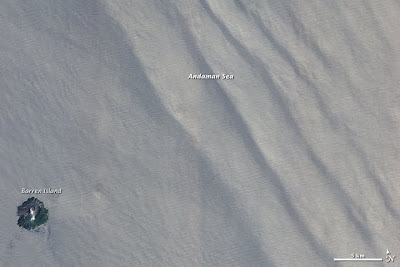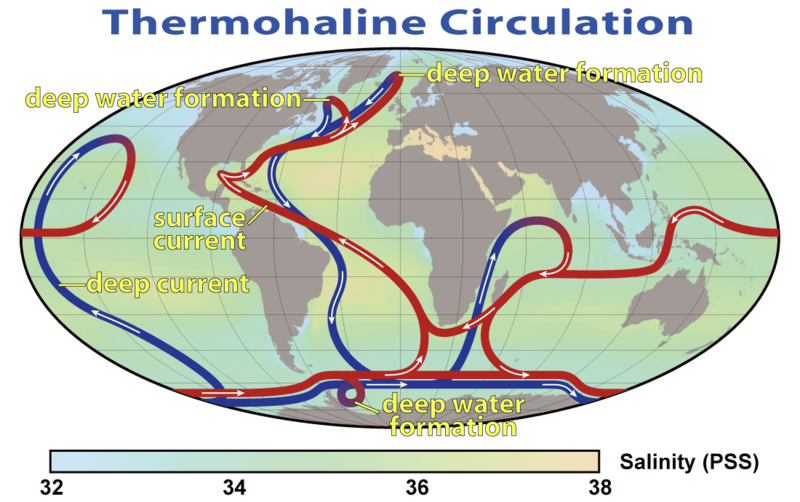Internal waves happen because the ocean is layered. Deep water is cold, dense, and salty, while shallower water is warmer, lighter, and fresher. The differences in density and salinity cause the various layers of the ocean to behave like different fluids. As internal waves move through the lower layer of the ocean, the lighter water above flows down the crests and sinks into the troughs. This motion bunches surface water over the troughs and stretches it over the crests, creating alternating lines of calm water at the crests and rough water at the troughs.
It is the pattern of calm and rough water that makes the internal wave visible in satellite images. Calm, smooth waters reflect more light directly back to the satellite, resulting in a bright, pale stripe along the length of the internal wave. The rough waters in the trough scatter light in all directions, forming a dark line.
In my new book DEEP BLUE HOME I spent a fair amount of time writing about the stratification of the ocean. At its largest scale, the motion of the waters of the globe are known as the thermohaline circulation, because they’re driven by differences in temperature (thermo) and salinity (haline). Here’s a snippet:
Just as gravity drains the rivers of the land, so gravity drains the rivers of the World Ocean. The saltier, colder, heavier rivers sink beneath the fresher, warmer, lighter ones. The three dimensional realm of the ocean is layered with watersheds running over and atop one another in multiple directions. An exploded view of the global thermohaline circulation looks something like an intricately entwined highway interchange system, with layers crossing and bypassing at many levels, in all directions, and at different speeds.
This simplified diagram is worth a thousand words:
The timescale of the thermohaline circulation is pretty amazing. On the order of a couple of millennia to circulate complete around the world. We currently understand only the broad outline of the system.

















